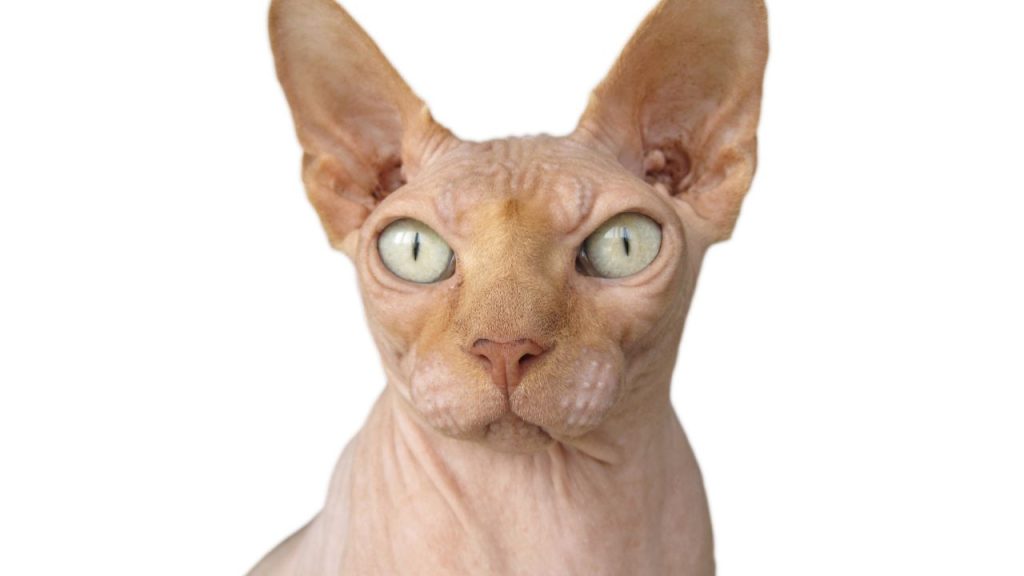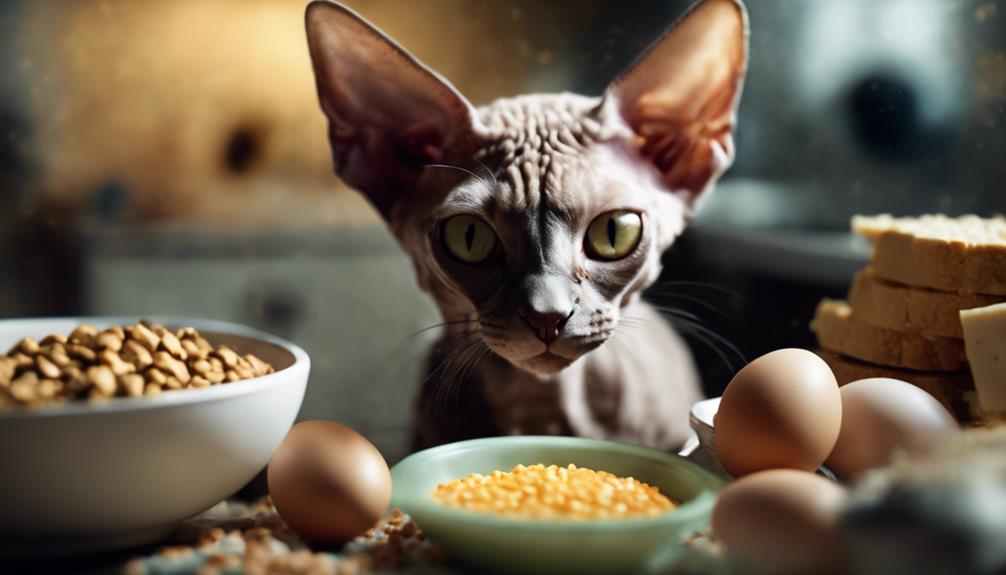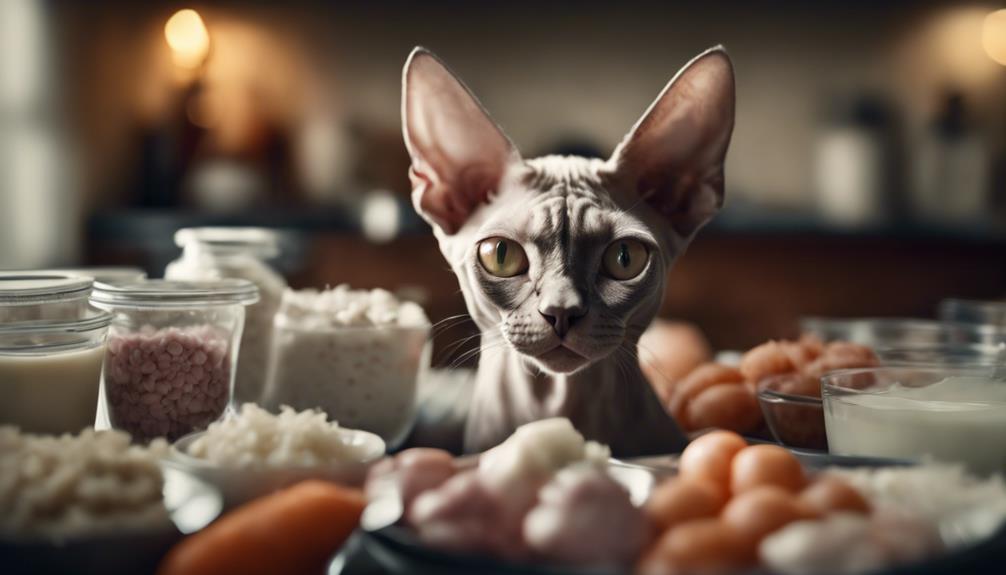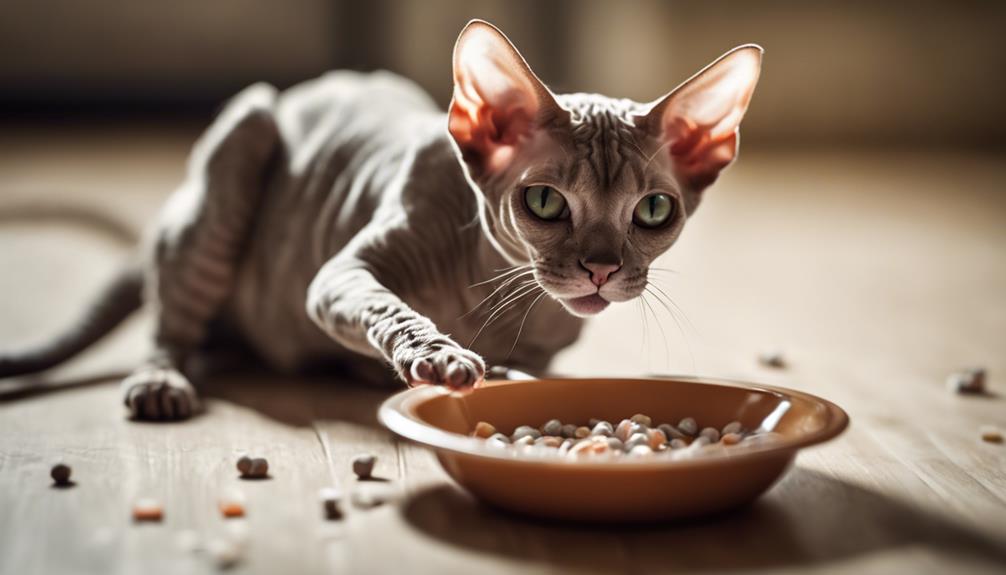Are you considering getting a hairless cat as a pet? If so, you may have come across two popular breeds: the Peterbald and the Sphynx. While these cats may look similar, they have some distinct differences that you should be aware of before making a decision.
The Peterbald and the Sphynx are both practically hairless, which is why they are often referred to as “naked cats.” However, the Peterbald has a little more hair than the Sphynx, and experts describe them as having a mustache and whiskers. In contrast, the Sphynx may have partial or no whiskers at all. Additionally, the Peterbald has a longer head compared to the Sphynx. Understanding these differences can help you choose the right breed for your lifestyle and preferences.
If you’re looking for a loyal and friendly companion, the Peterbald may be the perfect choice for you. They are known for their affectionate personalities and love to be around their owners. On the other hand, the Sphynx demands attention and may suffer from health problems like skin cancer and hereditary myopathy. By understanding the differences between these two breeds, you can make an informed decision and choose the right cat that fits your lifestyle and personality.
History and Origin
Both Peterbald and Sphynx cats are relatively new breeds, having been developed in the 1990s.
Peterbald
The Peterbald breed was first created in St. Petersburg, Russia, in 1994 by a breeder named Olga S. Mironova. She crossed an Oriental Shorthair cat with a Don Sphynx, resulting in a hairless cat breed with a unique appearance. The breed was named after its city of origin, St. Petersburg, which was previously known as Petrograd.
Sphynx
The Sphynx breed, on the other hand, originated in Toronto, Canada, in 1966. A domestic cat gave birth to a hairless kitten, which was then bred with other cats to create the Sphynx breed. The Sphynx was officially recognized as a breed by the Cat Fanciers’ Association in 1970.
Both the Peterbald and Sphynx breeds have gained popularity in recent years due to their unique appearance and affectionate personalities. Despite their hairless appearance, both breeds require regular grooming to maintain healthy skin.
In terms of origin, the Peterbald has a closer connection to Russia and the Don Sphynx, while the Sphynx has its roots in Canada. However, both breeds have gained fans all over the world for their distinctive looks and friendly personalities.
Physical Characteristics
When it comes to physical characteristics, Peterbald and Sphynx cats share some similarities, but they also have some notable differences. In this section, we’ll take a closer look at the various physical features of these two hairless cat breeds.
Coat Type
While both Peterbald and Sphynx cats are hairless, there are some differences in their coat type. Peterbald cats have a thin layer of hair that comes in five variations, while Sphynx cats have no hair at all. Peterbald cats may have a straight coat, a velour coat, a brush coat, a flock coat, or a combination of these. Sphynx cats, on the other hand, have a soft, warm, and often oily skin that feels like a peach.
Weight
Peterbalds and Sphynxes are both medium-sized cats. Peterbalds typically weigh between 6 and 12 pounds, while Sphynxes can weigh anywhere from 6 to 12 pounds as well.
Colors and Patterns
Both Peterbalds and Sphynxes come in a variety of colors and patterns. Peterbalds can be solid-colored, pointed, or have a tabby pattern, while Sphynxes can be solid-colored, pointed, or have a variety of patterns, including tabby, tortoiseshell, and calico.
Ears
Peterbald cats have large ears that sit low on their heads, while Sphynx cats have larger ears that sit higher on their heads. Both breeds have ears that are straight and upright.
Whiskers
Peterbald cats have a mustache, while Sphynx cats have broken or no whiskers at all.
Height
Peterbald cats are slightly taller than Sphynx cats, with an average height of 8 to 10 inches.
Overall, both Peterbald and Sphynx cats are low-maintenance pets that are perfect for people who are allergic to cat hair or just prefer a hairless cat. With their almond-shaped eyes, large ears, and unique coat types, these cats are sure to turn heads wherever they go.
Temperament and Personality
When it comes to temperament and personality, both Peterbald and Sphynx cats are known to be friendly, outgoing, and energetic companions. However, there are some differences in their characteristics, temperament, intelligence, and affectionate nature that set them apart.
Characteristics
Peterbald cats are known for their longer heads, almond-shaped eyes, and lower ears compared to Sphynx cats. They also have a mustache, which distinguishes them from Sphynx cats that have broken or no whiskers. Peterbald cats have five coat layers, while Sphynx cats are entirely hairless.
Temperament
Both Peterbald and Sphynx cats are known to be intelligent and outgoing. They are playful, athletic, and dog-like in their behavior. They are also vocal and can communicate with their owners through meows, chirps, and other sounds.
Affectionate
Peterbald and Sphynx cats are both known for their affectionate nature. They love to be around their owners and enjoy cuddling and snuggling. They are loyal companions and will follow their owners around the house.
Outgoing
Peterbald and Sphynx cats are both outgoing and love to interact with people. They are not shy and will greet visitors with enthusiasm. They are also curious and love to explore their surroundings.
Energetic
Both Peterbald and Sphynx cats are energetic and playful. They love to play with toys and engage in physical activities. They are also athletic and enjoy climbing, jumping, and running.
Friendly
Peterbald and Sphynx cats are both friendly and social. They enjoy being around people and other pets. They are not aggressive and are known to get along well with children and other animals.
Loyal
Peterbald and Sphynx cats are both loyal companions. They form strong bonds with their owners and are known to be very affectionate. They will follow their owners around the house and will always be by their side.
Independent
While Peterbald and Sphynx cats are both affectionate and loyal, they are also independent. They are not clingy and will not demand constant attention. They are happy to spend time alone and entertain themselves.
In conclusion, both Peterbald and Sphynx cats have similar temperaments and personalities. They are friendly, outgoing, energetic, and affectionate companions. However, there are some differences in their characteristics, temperament, and behavior that set them apart. Whether you choose a Peterbald or a Sphynx cat as your companion, you can be sure that you will have a loyal and loving friend by your side.
Health and Care
Health Issues
Both the Peterbald and Sphynx cat breeds are generally healthy, with the Peterbald being known to have fewer health problems than the Sphynx. However, both breeds are prone to certain health issues due to their hairless genetics. Some of the common health problems that these hairless cats may develop include heart disease, obesity, cancer, and hypertrophic cardiomyopathy. Additionally, hairless cats are more susceptible to skin cancer due to their lack of fur protection.
Grooming and Bathing
Despite being hairless, both the Peterbald and Sphynx cats require regular grooming and bathing to maintain their skin health. These cats produce more oils than other breeds, which can lead to skin irritation and acne if not properly cleaned. Regular bathing and grooming can help control the buildup of oils and keep their skin healthy.
Diet and Exercise
Both the Peterbald and Sphynx cats require a balanced diet and regular exercise to maintain their health. These cats have high metabolisms and require more calories than other breeds to maintain their body temperature. A diet rich in protein and healthy fats is recommended, along with regular exercise to keep them active and healthy.

Trainability and Grooming Needs
Both the Peterbald and Sphynx cats are intelligent and easy to train. They are social cats that enjoy human interaction and can be taught tricks and commands with patience and positive reinforcement. Additionally, their grooming needs are relatively low, as they do not shed much fur. Regular nail trimming and ear cleaning are recommended, along with brushing their teeth to maintain good oral health.
Hair Loss Gene
The hair loss gene is responsible for the hairlessness of both the Peterbald and Sphynx cats. In the Peterbald, the hairlessness is caused by a dominant gene, while in the Sphynx, it is caused by a recessive gene. This means that the Peterbald has a higher chance of producing hairless offspring than the Sphynx. However, both breeds require careful breeding to avoid genetic health problems.
In conclusion, both the Peterbald and Sphynx cat breeds are unique and require special care. Regular grooming, a balanced diet, and regular exercise are essential to maintaining their health. While they are generally healthy, both breeds are prone to certain health issues due to their hairless genetics. It is important to research breeders and ensure that proper care is taken to avoid genetic health problems.




